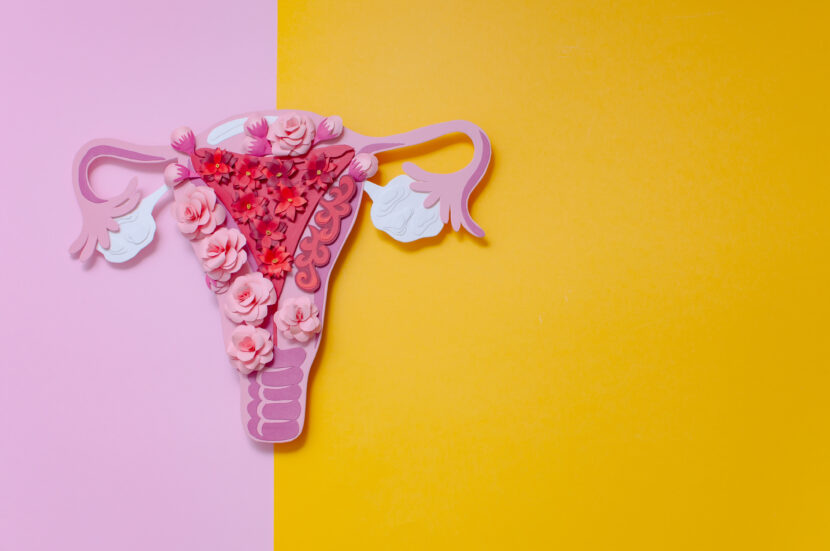Endometriosis is a condition that affects millions of women of reproductive age worldwide. It is a chronic and often painful condition and currently has no cure. Women living with endometriosis could end up enduring pain that interferes with their routine, often affecting their lives and activities.
What is Endometriosis?
Endometriosis is a condition where the endometrium (tissue lining) grows on the outside of the uterus rather than the inside. The uterus is an important part of the female reproductive system. The inside of the uterus produces a tissue that lines its walls and sheds during each menstrual phase, called the endometrium. This lining prepares the uterus for fertilisation and implantation of an embryo.
The causes for this condition are unknown, but theories such as retrograde menstruation and coelomic metaplasia are often cited. Since it cannot be treated, patients with endometriosis are usually suggested treatments for pain relief and management.
Types of Endometriosis
Depending on where and how it affects a person, endometriosis is usually classified into four types.
- Superficial peritoneal endometriosis: In this type of endometriosis, the endometrium attaches itself to the peritoneum – a thin membrane that lines your pelvic and abdominal cavities. It supports the organs and serves as a passage for nerves, lymphatics, and more. This is the least severe type of this condition.
- Endometrioma: This type involves cystic lesions and usually affects the ovaries. However, the lesions can also appear on the pelvis or abdomen. These cysts vary in size and are filled with a dark fluid. They are also known as ‘chocolate cysts’.
- Deeply infiltrating endometriosis (DIE): This type of endometriosis is rare, and it affects the organs outside or within the pelvic cavity. This includes the rectum, bladder, bowels, ovaries, and more. It is also known as ‘frozen pelvis’, since excess scar tissue can bond the organs together, leaving them frozen in place.
- Abdominal wall endometriosis (AWE): This type of endometriosis is also rare and is usually caused because of surgeries such as Caesarean section. Here, the endometrium can grow on abdominal walls. It forms less than 1% of the endometriosis cases.
Also, Read: Endometriosis and Infertility
Stages of Endometriosis
Apart from the types, endometriosis is classified into stages, usually four. This allows for healthcare providers to better understand the condition and recommended suitable endometriosis treatment.
The four stages of endometriosis classification are:
-
Stage I (Minimal)
The presence of scar tissue is little to none in this case. Implants and lesions are small and few. It may affect the pelvis, abdomen, and organs.
-
Stage II (Mild)
There may be some scar tissue at this stage. Also, there is a higher occurrence of implants and they are deeper in the tissue.
-
Stage III (Moderate)
More implants and cysts that are embedded deeper are found at this stage. There may also be a group of scar tissues forming an adhesion.
-
Stage IV (Severe)
This stage sees the deepest implants and thick adhesions. Large cysts on the ovaries are common through this stage.
Common Symptoms of Endometriosis
Endometriosis is mostly associated with pain in the pelvic and abdominal areas, especially during the menstrual phase. Some other symptoms that are commonly experienced in endometriosis include:
- Pain during sexual intercourse
- Pain during bowel movements
- Pain during urination
- Menorrhagia, or heavy bleeding during menstruation
- Diarrhoea
- Constipation
- Fatigue
- Bloating
- Nausea
These symptoms, and the intensity of pain, may vary from person to person irrespective of their type and stage of endometriosis.
Another aspect of endometriosis is infertility. Women with intense cases of endometriosis tend to have problems with conceiving or achieving a successful pregnancy. While there is no endometriosis treatment available as a cure, patients can opt for fertility treatments to work through these issues.
Also, Read: What Are the Diagnosis and Treatment Procedures for Endometriosis
Apollo Fertility Services & Treatments
| IUI Treatment | Ovulation Induction Treatment |
| IVF Treatment | HSG Treatment |
| Oocyte Vitrification Treatment | Laser Assisted Hatching Treatment |
| Reproductive Surgery Treatment | Cryopreservation Treatment |
Apollo Fertility Centres
